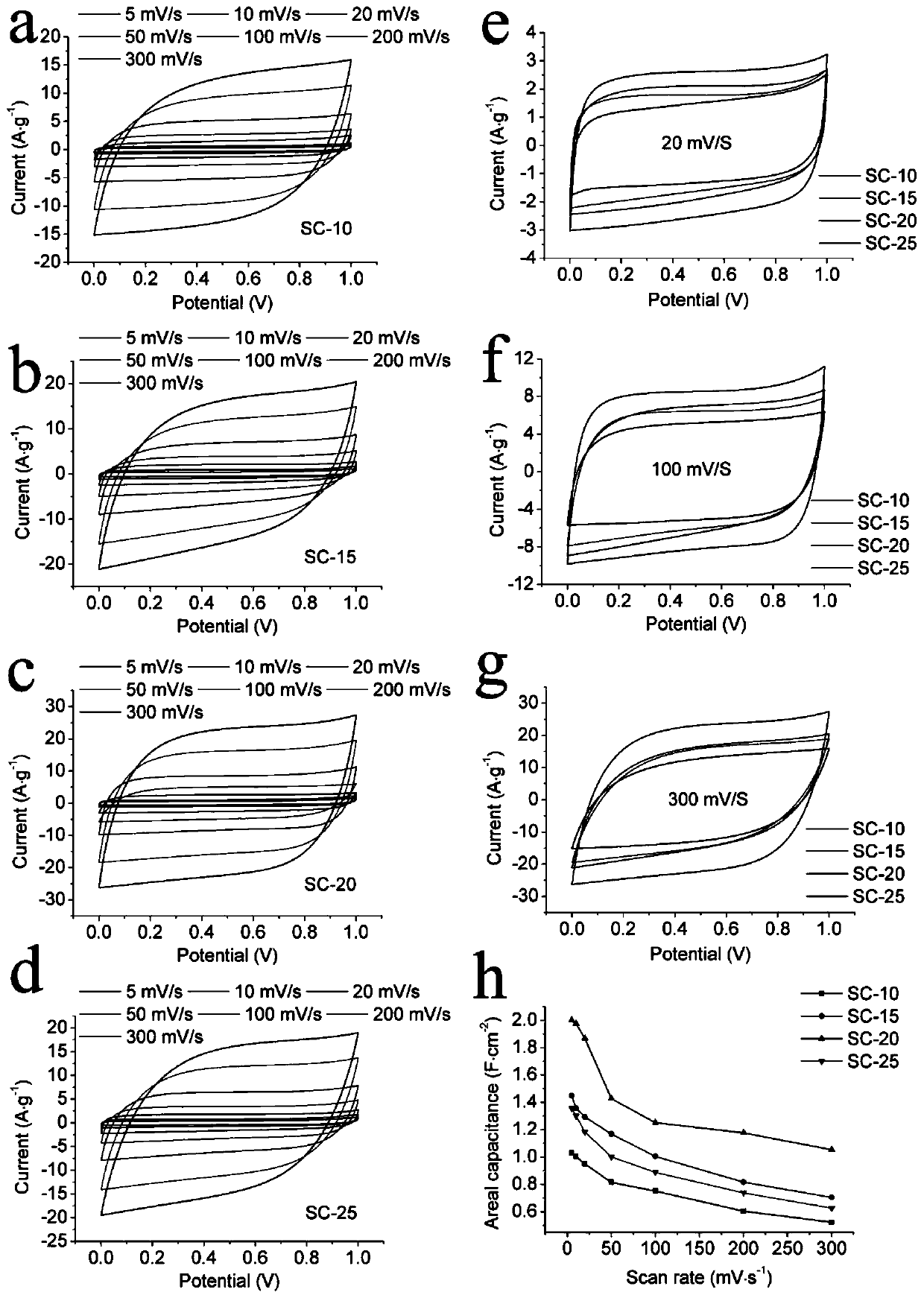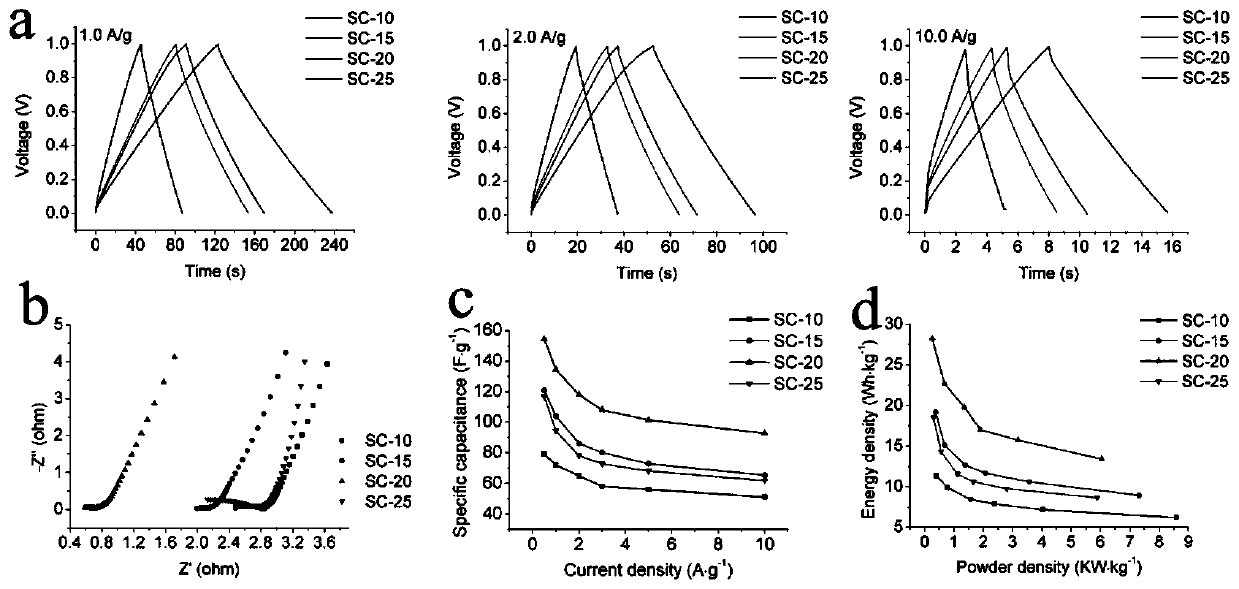Preparation method of cellulose-polyvinyl alcohol composite film based on phase inversion and preparation method of supercapacitor
A technology of polyvinyl alcohol and polyvinyl alcohol solution, which is applied in the field of electrochemical materials, can solve the problems of low liquid absorption rate and liquid retention rate, low surface energy, lyophilicity, and poor wettability, and achieve high liquid absorption rate , Good lyophilicity, high liquid retention effect
- Summary
- Abstract
- Description
- Claims
- Application Information
AI Technical Summary
Problems solved by technology
Method used
Image
Examples
Embodiment 1
[0041] 1) Take an appropriate amount of dry straw, cut it into small pieces of 3 to 4 cm, and then use a universal grinder for crushing (about 30 seconds for each crushing), and then screen with a 40-mesh sieve to separate the cellulose required for subsequent experiments. raw material.
[0042] 2) Place the screened powder in a solution with a bath ratio of 50g / L for heating in a water bath, add an appropriate amount of 40g / L NaOH and 2g / L NaHSO to the solution 3 , control the temperature of the water bath at 90 degrees Celsius, and heat for 4 hours, during which sufficient stirring is carried out so that the reaction can be carried out well.
[0043] 3) Filter out the solids, add 10g / L sodium chlorite, 5-6ml acetic acid (36-38% commercially available acetic acid), stir and heat in a water bath at 70°C for 4 hours, during which time every 1 hour Add acetic acid once, and add 5-6ml each time. After the water bath heating is completed, the solid matter is fully washed with wa...
Embodiment 2
[0051] The difference between this example and Example 1 is the difference in the amount of cellulose and polyvinyl alcohol added in step (6) (see Table 1 for details), and the prepared composite film is CP-15.
Embodiment 3
[0053] The difference between this example and Example 1 is the difference in the amount of cellulose and polyvinyl alcohol added in step (6) (see Table 1 for details), and the prepared composite film is CP-20.
PUM
| Property | Measurement | Unit |
|---|---|---|
| Specific capacitance | aaaaa | aaaaa |
Abstract
Description
Claims
Application Information
 Login to View More
Login to View More - R&D
- Intellectual Property
- Life Sciences
- Materials
- Tech Scout
- Unparalleled Data Quality
- Higher Quality Content
- 60% Fewer Hallucinations
Browse by: Latest US Patents, China's latest patents, Technical Efficacy Thesaurus, Application Domain, Technology Topic, Popular Technical Reports.
© 2025 PatSnap. All rights reserved.Legal|Privacy policy|Modern Slavery Act Transparency Statement|Sitemap|About US| Contact US: help@patsnap.com



